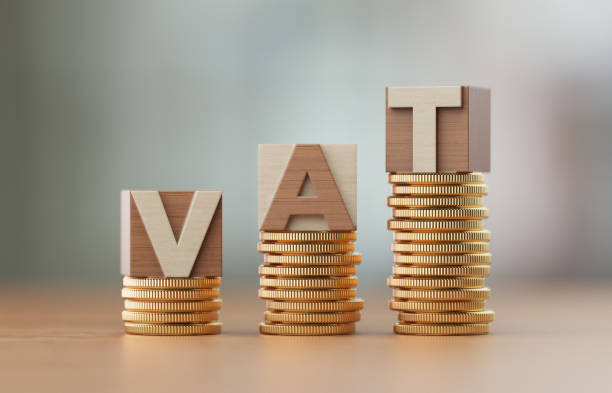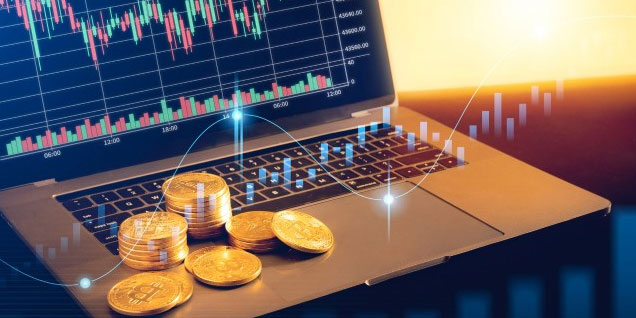All You Need to Know About Value-Added Tax
Dec 19, 2023 By Triston Martin
Value-Added Tax, or VAT for short, is a type of indirect consumption tax charged incrementally on products and services. VAT is also called Goods and Services Tax in some countries. The purpose of VAT is to reimburse producers at each step in the line of production. It represents a percentage of the final selling price.

The one who pays VAT is the one who purchases the finished product. Consider this: a farmer is selling their coffee beans. They are taken to the factory, where they are processed and packaged into coffee sold in the stores. This coffee can then be taken to Starbucks, where it is sold as a drink. When you purchase your beloved Caffe Mocha, you pay VAT.
The government stipulates how consumer goods and services should be subject to VAT and its administration. Consumers should not be worried about retailers hyper-inflating VAT prices on their products. In some countries, the VAT system places a bias on different kinds of goods. For instance, VAT on luxury goods is not the same as on necessities like food.
There are three types of Value-Added Tax:
- Income
- Consumption
- Gross National Product (GNP)
How to Calculate Value-Added Tax
There are online VAT calculators readily available on the internet. This guide equips you with the necessary knowledge to know what exactly is being used in the calculation. The best way to understand how VAT works and is calculated is by considering an example.
In a fictional country called Vitalis, the company Zuena sells calendars. Vitalis charges a 12% VAT on all goods and services produced. So, Zuena buys the required materials to make the calendars, such as paper and ink, at $3 per calendar. For this, Zuena pays a VAT of 36 cents, making the total buying price $3.36. Zuena then sells the calendar to a popular retailer, Tikka, at $6 exclusive of a VAT of 72 cents, making the total to come to $6.72. Zuena pays Vitalis $36 in tax. This figure equals the VAT that would have been calculated directly from the sale’s margin; that is, 12% of ($6 minus $3) equals 36 cents.

Value-Added Tax vs Sales Tax
The main difference between VAT and sales tax is that Value-Added Tax is charged at each step of production while sales tax is assessed at the final step, that is, by the final consumer. VAT is paid by each buyer, from the original one to the final consumer, whereas the final customer only caters for sales tax at the shop.
The United States uses sales tax, which varies depending on the state and the particular goods. Some goods are exempt from sales tax. The seller levies tax to the consumer, collects it, and then pays it back to the tax authority as tax.
Due to the intricate nature of assessing and collecting VAT, it requires precise documentation for every transaction. On the other hand, sales tax may survive without strict documentation as the tax responsibility is just at the final stage. In this way, VAT is more effective at reducing tax evasion than sales tax.
Pros of Value-Added Tax
- VAT helps in avoiding double taxation. VAT increases tax accountability by enabling a self-reporting mechanism by businesses. Since businesses and all middlemen between production and delivery of a product or service know that they will be reimbursed for the costs, they will have to submit tax compliance reports to be viable to receive VAT. In this way, tax evasion is evaded.
- VAT boosts the nation’s Gross Domestic Product (GDP) tremendously. Since every member of the production process knows that they will be reimbursed for their taxes (in avoidance of double taxation), they get a stronger incentive to work, bringing in huge profits.
- Businesses embrace a self-reporting mechanism since businesses can keep invoices and generally embrace better financial reporting.
Cons of Value-Added Tax
- In some ways, VAT does nothing to meet the distance between the rich and the poor in society because it charges a fixed rate for everyone. This is where the theory of VAT being a regressive tax comes from.
- The final consumer ends up bearing the whole tax burden.
- VAT involves calculating tax per production stage. This takes a toll on small businesses as they will need to enlist professional financial services and experts to ensure correct figures. The consequence of this is that these businesses will have more expenses.
Popular Disapprovals of Value-Added Tax
Most critics feel that since VAT has solved many tax collection issues, it has created a bigger conundrum than it found. Yet they also agree that without VAT, the economy would be flooded with tax evasions.
Perhaps the greatest criticism of VAT is that it is a regressive tax. It places a heavier tax burden on individuals on the lower socioeconomic level than those who are higher up. Since poor people mostly spend all their money on daily necessities, while rich people can spare some money to save, VAT is viewed as oppressive.
A way to deal with this would be to create tax exemptions on basic needs, such as food or health services. Yet this rids VAT of its best benefit: its simplicity, which stems from universality. The fact that all products and services have a VAT levy is what streamlines the whole tax collection system. Exemptions may cause too many loopholes, which may lead to tax evasion.
Also, critics of this criticism believe that VAT is ‘pro-poor’ in that it is proportional. Only when you purchase goods and services do you get to pay for it, so in a way, since poor people have fewer consumptions, they pay less tax.
Does the US Use Value-Added Tax?
Surprisingly, or not, the United States does not have a federal VAT requirement. Instead, different states have different sales tax systems. So, where does the government get its funding for projects? Primarily, the US federal government relies on income tax. Democrats view VAT as extremely regressive, while Republicans feel it is too broad-based.
Most countries have employed the VAT system since it is easier to levy consumption tax than income. Incomes may have sharply nosedived, yet consumption mildly declined in comparison. This is because savings and investments can cushion consumption. People still consumed the products and services they were pre-pandemic, although at a lower level. This is why financial experts advise on the benefits of VAT.








